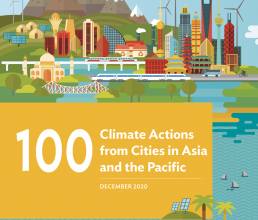First appeared in

Asian Development Bank
100 Climate Actions from Cities in Asia and the Pacific
Myanmar’s first waste-to-energy plant is alleviating Yangon’s dependence on landfilling whilst meeting its growing electricity demand.
Myanmar’s first waste-to-energy plant is alleviating Yangon’s dependence on landfilling whilst meeting its growing electricity demand.
Yangon’s 4.3 million inhabitants produced roughly 3,000 tons of waste per day in 2017, double the level of 2011. This has created significant waste treatment challenges for a city that relies on poorly managed landfills. In response, the city built a waste-to-energy plant in 2017, capable of processing 6o tons of waste per day, that generates electricity for the nation’s former capital.
4.1K
TONS OF CO₂ EQUIVALENT REDUCED EVERY YEAR
The plant provides a blueprint for alternative waste management in Myanmar and across Southeast Asia, where population and consumption levels are still on the rise and harmful landfills are the norm. Looking further ahead, Myanmar will also need to decrease total levels of waste production, and amplify recycling efforts.
The recent democratization of Myanmar has enhanced political stability and triggered rapid economic growth. This progress has posed challenges, however, where growth of city populations and the middle class have outpaced the modernization of the public services and infrastructure that support them.

The project is supported by the Japanese Ministry of Environment as the Joint Crediting Mechanism, and is expected to spread to other cities in Myanmar (photo by Dianne Delfino).
The Challenge
As the largest and most populous city in Myanmar, Yangon is exploring opportunities to sustainably manage its increasing waste volume while reducing landfill disposal.
Co-Benefits
Economic Waste-to-energy facilities can generate revenue for communities through the sale of electricity, tipping fees, and profits from recovered metals.
Health The new plant will effectively reduce some of the methane emissions from current landfills, improving the air quality for residents.

